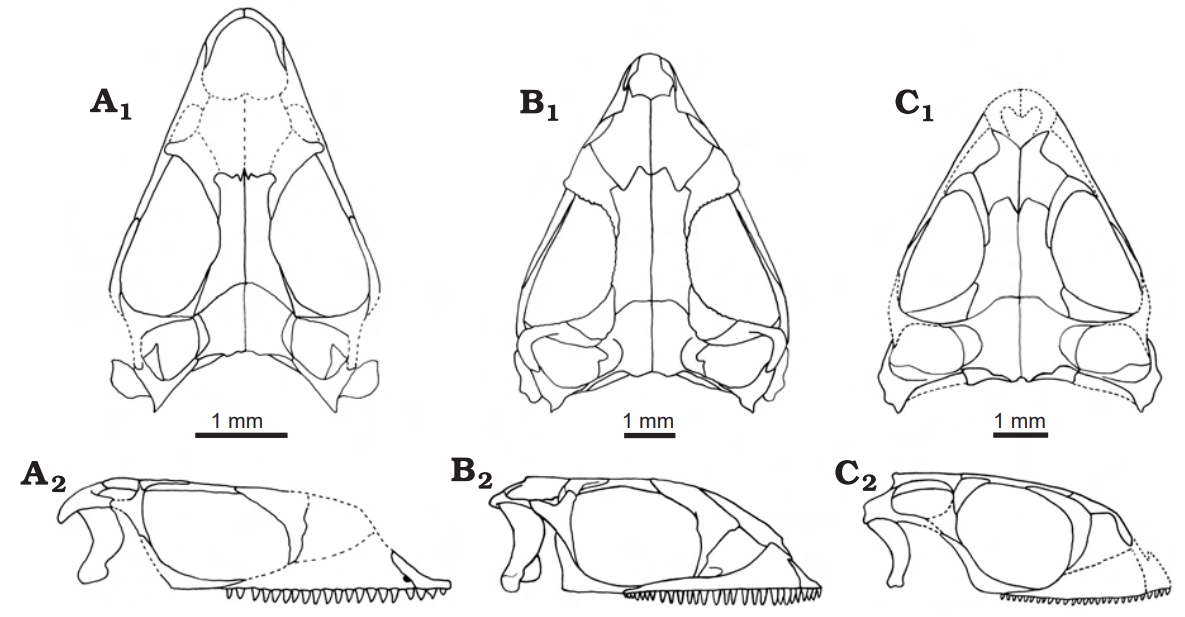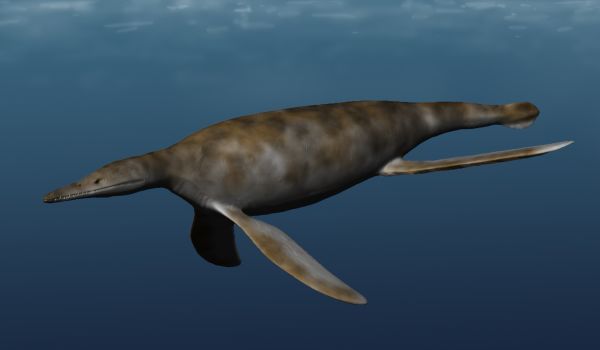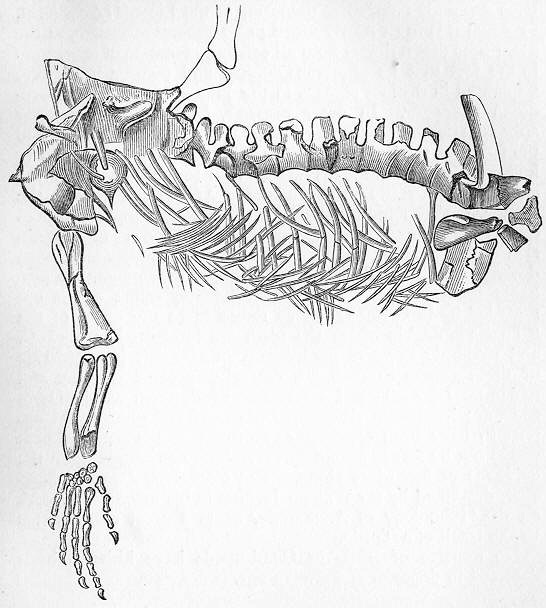|
Pamelina
''Pamelina'' is an extinct genus of basal kuehneosaurid known from Early Triassic (Olenekian age) rocks of Czatkowice 1, Poland.. It was first named by Susan E. Evans in 2009 and the type species is ''Pamelina polonica''. It is the oldest known member of Kuehneosauridae. The vertebrae have characteristics consistent with gliding or parachuting. Phylogeny Cladogram A cladogram (from Greek ''clados'' "branch" and ''gramma'' "character") is a diagram used in cladistics to show relations among organisms. A cladogram is not, however, an evolutionary tree because it does not show how ancestors are related to ... after Evans (2009). References Triassic lepidosauromorphs Fossil taxa described in 2009 Early Triassic reptiles of Europe Prehistoric reptile genera {{triassic-reptile-stub ... [...More Info...] [...Related Items...] OR: [Wikipedia] [Google] [Baidu] |
Kuehneosauridae
Kuehneosauridae is an extinct family of small, lizard-like gliding diapsids known from the Triassic period of Europe and North America. They are distinguished from other diapsids by their 'wings' formed by elongated ribs. These allowed the animal to glide and parachute similar to living gliding lizards. They were most likely insectivorous, judging from their pin-like teeth. They are often, but not always, placed in the group Lepidosauromorpha, though other studies have recovered them in other positions within Sauria, including Archosauromorpha. The oldest and most primitive known member is ''Pamelina'' from the Early Triassic (Olenekian stage) of Poland, which already has vertebrae with characteristics consistent with gliding or parachuting. ''Icarosaurus'' is known from a single specimen from the Carnian-aged Lockatong Formation of New Jersey. The Late Triassic (Norian stage) kuehneosaurids from England, ''Kuehneosaurus'' and ''Kuehneosuchus'', are very similar and can be disting ... [...More Info...] [...Related Items...] OR: [Wikipedia] [Google] [Baidu] |
Sophineta
''Sophineta'' is an extinct genus of basal lepidosauromorph reptile known from the Early Triassic (late Olenekian age) of Małopolska Province, southern Poland. It contains a single species, ''Sophineta cracoviensis''. Discovery ''Sophineta'' was first described and named by Susan E. Evans and Magdalena Borsuk−Białynicka in 2009, and the type species is ''Sophineta cracoviensis''. It is known from holotype ZPAL RV/175, a nearly complete right maxilla. Many isolated or associated skull and postcranial fragments are referred to the species, representing frontals, parietals, prefrontal, postfrontals, postorbitals, jugals, squamosals, pterygoids, quadrates, maxillae, premaxilla, dentaries, vertebrae and ilia. ''Sophineta'' fossils were discovered ''in situ'' and collected in 1982 by a team (Paszkowski and Wieczorek) from the Institute of Geological Sciences of Jagiellonian University in Kraków. They were collected from the Czatkowice 1 locality, a single exposure near Kr ... [...More Info...] [...Related Items...] OR: [Wikipedia] [Google] [Baidu] |
2009 In Paleontology
Arthropods Cephalopods Three new species of extinct octopus, Octopoda discovered in 2009. The species – ''Keuppia hyperbolaris'', ''Keuppia levante'', and ''Styletoctopus annae'' – lived about 95 million years ago, and bear a strong resemblance to modern octopuses, suggesting that the Octopoda order has remained relatively unchanged for tens of millions of years. The fossils included evidence of cephalopod arm, arms, muscles, rows of suckers, cephalopod ink, ink, and internal gills. The discovery was made by a team led by Dirk Fuchs of the Freie University, which is located at Berlin, Germany.Rare fossil octopuses found NBC News, March 18, 2009 The fossils were found at Hakel and Hadjoula, Lebanon. [...More Info...] [...Related Items...] OR: [Wikipedia] [Google] [Baidu] |
Early Triassic
The Early Triassic is the first of three epochs of the Triassic Period of the geologic timescale. It spans the time between Ma and Ma (million years ago). Rocks from this epoch are collectively known as the Lower Triassic Series, which is a unit in chronostratigraphy. The Early Triassic is the oldest epoch of the Mesozoic Era. It is preceded by the Lopingian Epoch (late Permian, Paleozoic Era) and followed by the Middle Triassic Epoch. The Early Triassic is divided into the Induan and Olenekian ages. The Induan is subdivided into the Griesbachian and Dienerian subages and the Olenekian is subdivided into the Smithian and Spathian subages. The Lower Triassic series is coeval with the Scythian Stage, which is today not included in the official timescales but can be found in older literature. In Europe, most of the Lower Triassic is composed of Buntsandstein, a lithostratigraphic unit of continental red beds. The Early Triassic and partly also the Middle Triassic span the in ... [...More Info...] [...Related Items...] OR: [Wikipedia] [Google] [Baidu] |
Archosauromorpha
Archosauromorpha (Greek for "ruling lizard forms") is a clade of diapsid reptiles containing all reptiles more closely related to archosaurs (such as crocodilians and dinosaurs, including birds) rather than lepidosaurs (such as tuataras, lizards, and snakes). Archosauromorphs first appeared during the late Middle Permian or Late Permian, though they became much more common and diverse during the Triassic period. Although Archosauromorpha was first named in 1946, its membership did not become well-established until the 1980s. Currently Archosauromorpha encompasses four main groups of reptiles: the stocky, herbivorous allokotosaurs and rhynchosaurs, the hugely diverse Archosauriformes, and a polyphyletic grouping of various long-necked reptiles including ''Protorosaurus'', tanystropheids, and ''Prolacerta''. Other groups including pantestudines (turtles and their extinct relatives) and the semiaquatic choristoderes have also been placed in Archosauromorpha by some authors. A ... [...More Info...] [...Related Items...] OR: [Wikipedia] [Google] [Baidu] |
Fossil Taxa Described In 2009
A fossil (from Classical Latin , ) is any preserved remains, impression, or trace of any once-living thing from a past geological age. Examples include bones, shells, exoskeletons, stone imprints of animals or microbes, objects preserved in amber, hair, petrified wood and DNA remnants. The totality of fossils is known as the ''fossil record''. Paleontology is the study of fossils: their age, method of formation, and evolutionary significance. Specimens are usually considered to be fossils if they are over 10,000 years old. The oldest fossils are around 3.48 billion years old to 4.1 billion years old. Early edition, published online before print. The observation in the 19th century that certain fossils were associated with certain rock strata led to the recognition of a geological timescale and the relative ages of different fossils. The development of radiometric dating techniques in the early 20th century allowed scientists to quantitatively measure the absolute ... [...More Info...] [...Related Items...] OR: [Wikipedia] [Google] [Baidu] |
Triassic Lepidosauromorphs
The Triassic ( ) is a geologic period and system which spans 50.6 million years from the end of the Permian Period 251.902 million years ago ( Mya), to the beginning of the Jurassic Period 201.36 Mya. The Triassic is the first and shortest period of the Mesozoic Era. Both the start and end of the period are marked by major extinction events. The Triassic Period is subdivided into three epochs: Early Triassic, Middle Triassic and Late Triassic. The Triassic began in the wake of the Permian–Triassic extinction event, which left the Earth's biosphere impoverished; it was well into the middle of the Triassic before life recovered its former diversity. Three categories of organisms can be distinguished in the Triassic record: survivors from the extinction event, new groups that flourished briefly, and other new groups that went on to dominate the Mesozoic Era. Reptiles, especially archosaurs, were the chief terrestrial vertebrates during this time. A specialized subgroup of archosaurs ... [...More Info...] [...Related Items...] OR: [Wikipedia] [Google] [Baidu] |
Protorosaurus
''Protorosaurus'' ("first lizard") is a genus of lizard-like early reptiles. Members of the genus lived during the late Permian period in what is now Germany and Great Britain. Once believed to have been an ancestor to lizards, ''Protorosaurus'' is now known to be one of the oldest and most primitive members of Archosauromorpha, the group that would eventually lead to archosaurs such as crocodilians and dinosaurs. Description ''Protorosaurus'' grew up to in length, and was a slender, lizard-like animal, vaguely resembling a monitor lizard, with long legs and a long neck. Discovery ''Protorosaurus'' was one of the first fossil reptiles to be described, being initially described in Latin in 1710 by from a specimen found in Thuringia in Germany, who considered the animal to be a crocodile, and most similar to the Nile crocodile (''C. niloticus''). Over a century later, in publications in 1830 and 1832 Hermann von Meyer recognised ''Protorosaurus'' as distinct extinct reptile a ... [...More Info...] [...Related Items...] OR: [Wikipedia] [Google] [Baidu] |
Thalattosauria
Thalattosauria (Greek for "sea lizards") is an extinct order of prehistoric marine reptiles that lived in the middle to late Triassic period. Thalattosaurs were diverse in size and shape, and are divided into two superfamilies: Askeptosauroidea and Thalattosauroidea. Askeptosauroids were endemic to the Tethys Ocean, their fossils have been found in Europe and China, and they were likely semiaquatic fish eaters with straight snouts and decent terrestrial abilities. Thalattosauroids were more specialized for aquatic life and most had unusual downturned snouts and crushing dentition. Thalattosauroids lived along the coasts of both Panthalassa and the Tethys Ocean, and were most diverse in China and western North America. The largest species of thalattosaurs grew to over 4 meters (13 feet) in length, including a long, flattened tail utilized in underwater propulsion. Although thalattosaurs bore a superficial resemblance to lizards, their exact relationships are unresolved. The ... [...More Info...] [...Related Items...] OR: [Wikipedia] [Google] [Baidu] |
Ichthyosauria
Ichthyosaurs (Ancient Greek for "fish lizard" – and ) are large extinct marine reptiles. Ichthyosaurs belong to the order known as Ichthyosauria or Ichthyopterygia ('fish flippers' – a designation introduced by Sir Richard Owen in 1842, although the term is now used more for the parent clade of the Ichthyosauria). Ichthyosaurs thrived during much of the Mesozoic era; based on fossil evidence, they first appeared around 250 million years ago ( Ma) and at least one species survived until about 90 million years ago, into the Late Cretaceous. During the Early Triassic epoch, ichthyosaurs and other ichthyosauromorphs evolved from a group of unidentified land reptiles that returned to the sea, in a development similar to how the mammalian land-dwelling ancestors of modern-day dolphins and whales returned to the sea millions of years later, which they gradually came to resemble in a case of convergent evolution. Ichthyosaurs were particularly abundant in the Late Triassic a ... [...More Info...] [...Related Items...] OR: [Wikipedia] [Google] [Baidu] |
Testudines
Turtles are an order (biology), order of reptiles known as Testudines, characterized by a special turtle shell, shell developed mainly from their ribs. Modern turtles are divided into two major groups, the Pleurodira (side necked turtles) and Cryptodira (hidden necked turtles), which differ in the way the head retracts. There are 360 living and recently extinct species of turtles, including land-dwelling tortoises and freshwater terrapins. They are found on most continents, some islands and, in the case of sea turtles, much of the ocean. Like other Amniote, amniotes (reptiles, birds, and mammals) they breathe air and do not lay eggs underwater, although many species live in or around water. Turtle shells are made mostly of bone; the upper part is the domed Turtle shell#Carapace, carapace, while the underside is the flatter plastron or belly-plate. Its outer surface is covered in scale (anatomy), scales made of keratin, the material of hair, horns, and claws. The carapace bon ... [...More Info...] [...Related Items...] OR: [Wikipedia] [Google] [Baidu] |
Sauropterygia
Sauropterygia ("lizard flippers") is an extinct taxon of diverse, aquatic reptiles that developed from terrestrial ancestors soon after the end-Permian extinction and flourished during the Triassic before all except for the Plesiosauria became extinct at the end of that period. The plesiosaurs would continue to diversify until the end of the Mesozoic. Sauropterygians are united by a radical adaptation of their pectoral girdle, adapted to support powerful flipper strokes. Some later sauropterygians, such as the pliosaurs, developed a similar mechanism in their pelvis. Uniquely among reptiles, sauropterygians moved their tail vertically like modern cetaceans and sirenians. Origins and evolution The earliest sauropterygians appeared about 247 million years ago (Ma), at the start of the Middle Triassic: the first definite sauropterygian with exact stratigraphic datum lies within the Spathian division of the Olenekian era in South China. Early examples were small (around 60 c ... [...More Info...] [...Related Items...] OR: [Wikipedia] [Google] [Baidu] |








